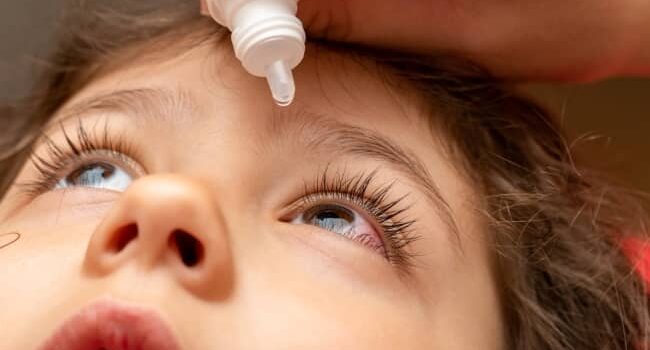Myopia, or nearsightedness, impacts millions of individuals worldwide. Particularly concerning is its impact on children, whose eyes are still developing. Myopia causes distant objects to appear blurry, making activities like reading the board in school or participating in outdoor sports challenging.
At John O’Connor Optometrists, our team is committed to providing comprehensive solutions to help manage and control myopia. One solution gaining attention is the use of atropine eyedrops. In this blog, we’ll explore the pros and cons of atropine eyedrops for myopia control, so you have the information needed to make informed decisions about your child’s eye care.
Understanding myopia
Myopia occurs when the eyeball is too long, or the cornea is too curved. This causes light rays to focus in front of the retina instead of directly on it. This results in blurred distance vision while near vision remains clear.
Myopia typically develops during childhood and tends to worsen as the eyes continue to grow, often stabilising in early adulthood. Additionally, myopia can increase the risk of eye conditions such as cataracts, glaucoma, and retinal detachment later in life.
What are atropine eyedrops?
Atropine eyedrops are commonly used in ophthalmology for dilation of the pupil, management of certain eye conditions, and, more recently, as a treatment for myopia control.
Atropine works by blocking the action of acetylcholine, a neurotransmitter responsible for pupil constriction. By dilating the pupil and temporarily relaxing the focusing muscles in the eye, atropine helps to reduce the strain on the eye associated with excessive growth, thereby slowing down the progression of nearsightedness. Recent research suggests that a concentration of atropine as low as 0.05% may be the most effective in slowing myopia progression in children while minimising potential side effects. Typically, you apply these drops once daily.
Some pros and cons of atropine eyedrops for myopia control
Pros:
1. Effective myopia control:
Atropine eyedrops have been shown to effectively slow down the progression of myopia in children, reducing the risk of severe nearsightedness.
Simple application:
Administering atropine eyedrops is straightforward, usually requiring only a single drop in each eye once a day.
Minimal side effects:
Compared to other myopia control options, such as orthokeratology or multifocal contact lenses, atropine eyedrops generally have fewer side effects.
Cons:
1. Pupil dilation:
Atropine causes temporary pupil dilation, which can result in sensitivity to light and difficulty focusing on near objects, particularly in brightly lit environments.
2. Blurry vision:
Some people may experience temporary blurry vision, especially when transitioning between near and distant objects.
3. Long-term effects:
The long-term effects of using atropine eyedrops for myopia control are still being studied, and further research is needed to fully understand their implications.
See a trusted eye expert
While atropine eyedrops show promise as a treatment option for myopia control, it’s essential to consult with an eye care professional to determine the most suitable approach for your child.
At John O’Connor Optometrists, we take a comprehensive, holistic approach to your child’s vision and our experienced team can provide guidance and support to help manage your child’s myopia and safeguard their long-term eye health.
Whether you visit our Newmarket or Henderson Optometrists, you can trust that your child’s vision is in caring, expert hands. To schedule an appointment or learn more about our services, please contact us at 09 522 1283 for our Newmarket Optometrists or 09 836 1731 for Henderson. Alternatively, you can reach out via our contact page.

